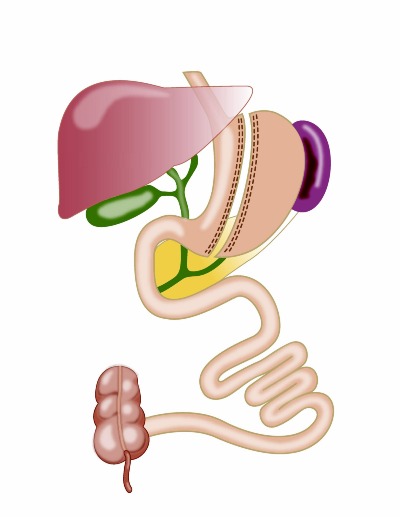



Sleeve Gastrectomy in San Diego is now being performed using "single-incision" technique. Contact us to learn more and see if you qualify.
Laparoscopic sleeve gastrectomy is the newest weight loss surgery procedure available. It has been performed in the United States for over 5 years now and is quickly gaining a reputation as a safe and highly effective weight loss procedure.
Surgical Diagram of the Laparoscopic Sleeve Gastrectomy Sleeve gastrectomy is a "restrictive only " procedure in the same fashion as adjustable gastric banding. Using a skinny tube, about 1 cm in diameter, a series of surgical staples are applied against the stomach to create a new longer and skinny stomach that holds only 2 ounces at any given time. The residual large portion of the stomach is removed because it can no longer drain its secretions. With the residual stomach removed from the body, the new stomach tube fills and empties with the normal anatomic connections and no "bypass" is needed. Weight loss is achieved by "restriction" that occurs when eating and moving food through the long narrow tube of the new stomach. This new stomach doesn't stretch so patients feel full with only a few bites. Also, because the new stomach is long and skinny, it takes longer for food to move through the stomach into the small intestines so patients feel fuller, longer. The typical patients loses 15 - 30 pounds the first month after surgery, followed by 8 - 12 pounds a month until they reach their goal. Ultimate weight loss is very similar to the Roux-en-Y gastric bypass with the average patient losing 70% of their excess weight by 12 to 18 months.
All surgery comes with risks and while extremely safe, sleeve gastrectomy comes with its own unique set.
Want to learn more? Please contact us and come to one of our free seminars. http://www.pbsmg.com/procedure/step.asp |




